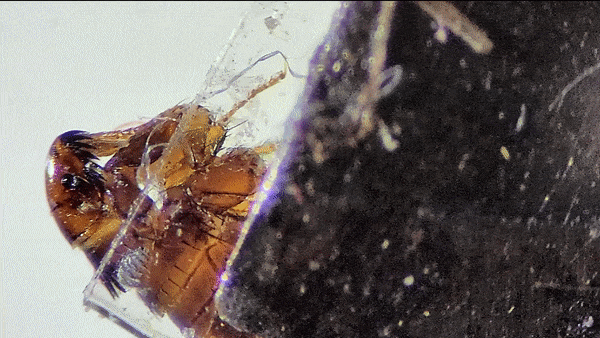Fleas have been universally hated by pets and their owners. The sight of just one flea jumping on the carpet or crawling on their pets can cause most pet owners to throw a fit. What the owners don't realize is that if they were asked to design a top-shelf ectoparasite (one that lives outside its host) that won't be easily killed and can reproduce quickly, they would be hard pressed not to copy the design of the flea.
For starters, fleas have a flattened body which allows it to move easily through the host hair. Evolution designed the flea and then at the end of the process drove a road roller over it, as is this case of the Wile E. Coyote.
One of the most common fleas around us is the Cat Flea. Despite their name, they are not picky with which host will pay for their next meal and can feed on the blood of everything from cats, humans, vampires, dogs, coyotes, pumas, opossums, squirrels and raccoons. One of the ways people identify different types of fleas is the presence or absence of that moustache in front of the head. That moustache is not for the sake of appearance, instead those series of spines are used to latch on to the hair of their host, so they cannot be displaced easily when the feeding has started.
One thing that is fascinating about these blood sucking insects is that they do not eat/drink anything else except blood from their host. And blood is not super nutritious in one serving, hence they have more than one serving to satisfy their appetite. The problem is blood is mostly water and drinking too much water can make the flea feel full quickly. So, its stomach is in a constant state of activity trying to process the blood and expel the water contents, so it can meet its nutrition quota for the day.
Below is one using its enzymes to process its blood meal.
Being in the blood meal business, the fleas naturally have a lot of enemies. And it is well equipped to jump away to safety when trouble comes calling. In order to do that, they use a body part called the pygidium that is sensitive to air currents and alerts it when something is too close for comfort. The pygidium is located on the far end of its abdomen.
And, here is the close up of the pygidium on the flea.
Unlike the true bugs which just have one piercing mouthpart, fleas have a sophisticated array of tools at its disposal when it sits to have its dinner. Some are used to sense the nearest blood vessel, some to saw into the skin and some to help with sucking the blood.








No comments:
Post a Comment
Did you learn something new in this post? Let us know in the comments below